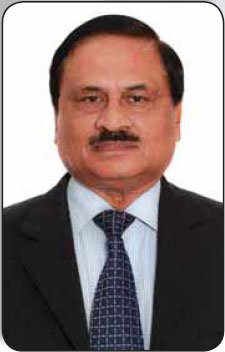 Lt Gen (Dr) AKS Chandele PVSM, AVSM (Retd) Managing Editor [email protected] |
Computers and computer networks have today pervaded almost every sphere of human activity, from household chores to running huge industrial complexes, military organisations, nuclear installations and space programmes. Most public utilities and services – electricity, water, gas, health services, communication and transportation systems are controlled by computers. Banking and financial services are more or less totally computerised. Private industry relies heavily on computers to run their enterprises. Commercial and government organisations are turning increasingly to ‘cloud’ for storing their critical data. Computerisation has made the management, monitoring and control of these activities considerably easier and much more efficient. The advantages are phenomenal, but they also render the systems vulnerable to malicious acts of cyber terrorism.
To counter the cyber threats, India had set up the Computer Emergency Response Team (CERT.in) in 2004, under the Department of Electronics and Information Technology, as the national nodal agency to respond to cyber threats as and when they occur. Faced with ever increasing cyber attacks and realising the inadequacy of CERT.in to effectively deal with them, the government created the National Critical Information Infrastructure Protection Centre (NCIIPC) in July last year, to function under the National Technical Research Organisation (NTRO), which would be responsible for cyber security in the critical sectors of energy, transportation, banking and finance, defence, space, law enforcement and security. CERT.in would continue to be responsible for the remaining non- critical sectors. It is learnt that NIIPC plans to have 500 cyber experts in a five-year time frame. However, with the growing number of threats and considering the criticality of the sectors, this number would be grossly inadequate. Moreover, the budget allocation for combating cyber threats is much too meagre.
Computers are an integral part of the military, be it in communications, surveillance, navigation, weapon guidance, intelligence gathering, data analysis and logistics. Due to the progressively increasing reliance on information technology, military plans and operations run the risk of being seriously compromised by cyber attacks. Realising this, our armed forces have announced their intention of setting up a tri-service ‘Cyber Command’, under a three star officer, which would be responsible for cyber warfare as related to the military.
Recently, the Director of US National Intelligence, James Clapper and the head of the US Cyber Command, Gen Keith Alexander told the US Senate Intelligence Committee that the possibility of a computer attack on the nation’s critical infrastructure is now the top security threat facing the country, surpassing terrorism. India is expected to overtake the US by 2015 to become one of the biggest online populations in the world, with nearly 300 million users, more than double the present 140 million. India needs to prepare itself for the information wars of the future. It is essential that the cyber warfare resources of the civil and the military complement and support each other to create a robust defensive and offensive capability for the nation. And importantly, a large pool of trained manpower, ‘cyber warriors,’ is required, which we lack at present.




